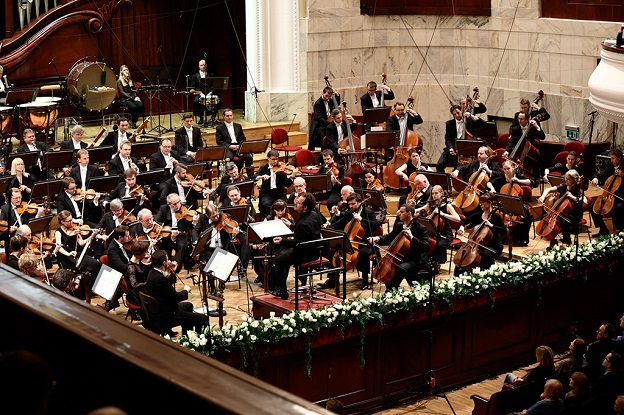The audience of the Beethoven Festival experienced yesterday one thrilling concert in Warsaw’s Philharmonic Hall. John Axelrod conducted the Sinfonia Varsovia in works by Kodaly, Beethoven and Stravinsky.
Momentarily handicapped after a surgery in his knee, John Axelrod had walked on stage on crutches, yet conducted barehanded, sitting on a chair, proving that as a sitting conductor he can dance and hop on the stool like his master Bernstein would have done standing on the podium.
In Zoltan Kodaly’s Dances of Galanta Axelrod prefigured the piece with his hands in an intense and extremely precise conducting. This was an almost perfect performance, admirably breathed, with fascinating colors, sparkling energy and some ravishing tender passages.
Violinist Marta Kowalczyk, cellist Arto Noras and pianist Barry Douglas were the soloists in Beethoven’s Triple Concerto. The trio was homogeneous, and we noted a remarkable dialogue between the violin and the cello, while Barry Douglas’s playing was clear and incisive, fitting well in John Axelrod’s energetic conducting.
From the finely chiseled beginning on, Sinfonia Varsovia was playing with a dense, full-blooded and warm, yet subtly nuanced sound. Comparing this performance with the one of the Warsaw Phil a few days ago, it would be hard not to notice that Sinfonia Varsovia meanwhile has surpassed the national orchestra and looks like being the best symphonic ensemble in town.
The last work was Stravinsky’s Rite of Spring, and here again John Axelrod had the big orchestra with some 100 musicians entirely in both of his hands.
For a conductor, The Rite of Spring is about transparency, colors and the management of dynamics and forces. He has to combine all those elements in an energy which never diminishes: it is either dammed up or flowing forceful. John Axelrod was a master in handling the piece, and in the result the performance was absolutely terrific and electrifying.
Remy Franck, Warsaw























